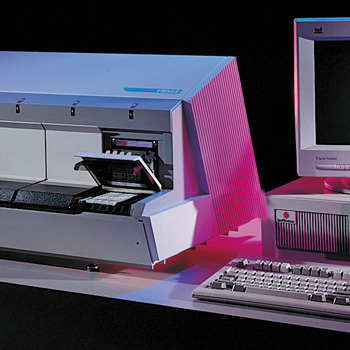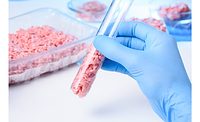When the enzyme-linked fluorescent assay (ELFA) technique was first introduced as a rapid, automated method for microbial detection in food industry samples in the early 1990s, it was considered ground-breaking. Today, one of the most recognized companies of this well-established first-generation technology is pushing the scientific frontiers of rapid microbiology with pioneering second-generation ELFA protocols to help the food industry meet new demands for fast, specific and sensitive results.
"Since microorganisms are constantly evolving and adapting to their environment, we have to keep evolving and adapting our arsenal of tools to detect target bacteria at lower detection limits with better specificity," says Pat Rule, M.S., Senior Staff Scientist with bioMérieux INDUSTRY®, the worldwide leader in automated solutions for rapid pathogen detection, including the automated VIDAS® system. "First-generation automated ELFA was born of the recognition that the food industry was looking for real-time management of their food products. Food companies needed to find a way to move forward in their production processes and quality assurance programs with cost-effective efficiency and a high level of confidence, particularly as it pertained to microbial testing of food products for regulatory and safety reasons.
"The first-generation systems established the power of combining automation with the ELFA technique to substantially reduce the time to result in pathogen detection," Rule continues. "The automated ELFA-based VIDAS system, which is unique among these first-generation instruments because it utilizes kinetics to produce an active contact between antibodies and antigens, provided a solution for food laboratories that required not only more rapid results but results that could be obtained in an efficient, reliable manner without a high level of microbiological expertise."
First-generation ELFA technology offers straightforward antigen-antibody reaction in an automated system that has been widely adopted as a rapid, reliable way to screen pathogens in food samples. By continually building upon this robust technology platform, bioMérieux INDUSTRY has been able to make incremental improvements to VIDAS test protocols over time, creating next-generation immunoassays with the increased sensitivity and specificity needed to "out-evolve" the microorganisms.
Small Increments of Change Lead to Big Results
Capitalizing on knowledge gained from a better understanding of microorganisms and their growth characteristics, as well as new data on a broader range of food matrices and product interferences, bioMérieux scientists have developed second-generation assays specific for pathogens of significant concern to the food industry. Two examples of these assays include the VIDAS LMO2 for detection of Listeria monocytogenes and a soon-to-be-available Staphylococcus enterotoxin test (VIDAS SET2).
"Both the LMO2 and the SET2 are good examples of how incremental changes can be made to existing technology platforms to achieve a big technical advance," Rule says. "The primary difference between the first-generation and second-generation protocols is in the enhancement of the antibodies. The first-generation assays were based on maintaining a straight antigen-antibody interaction, and were only as good as the antibody itself. These second-generation assays incorporate more refined monoclonal antibodies continuing to ensure the capture of a wide range of organisms while retaining increased specificity for the target organism.
Essentially, explains Rule, a greater purification of the antibody along with choosing the portions of the antibody that have the best sensitivity and specificity resulted in a "fine-tuned homing device" that allows the antibody to better seek the specific antigen. For example, the VIDAS LMO2 enrichment protocol utilizes state-of-the-art ELFA technology, featuring a new combination of complementary monoclonal antibodies with a specific treatment on the antibody fragment. The monoclonal antibodies are directed to different antigenic sites of a specific Listeria monocytogenes virulence protein, which optimizes the capture and detection. Treatment of the monoclonal antibody to remove the sticky Fc fragment of the antibody enzyme conjugate, significantly enhances kit performance. Removal of this fragment reduces possible interference with food matrices and non-specific binding of other bacteria that have the potential to generate false signals, resulting in better specificity. The release of two smaller Fab1 fragments optimizes the positioning of the antibody and favors the recognition of the antigen, resulting in better sensitivity. The same antibody enhancement technologies are used in the VIDAS SET2 assay.
Even as these second-generation ELFA technologies begin to be used in the food laboratory, bioMérieux INDUSTRY is undertaking a scientific initiative in the area of molecular methods development, specifically DNA chip technology. The company has developed DNA chips for water and meat testing, which allows the laboratory to quickly rule out nonviable organisms and isolate target organisms in a format that allows the microbiologist to test for a variety of different components simultaneously. The single disposables carry from 10,000 to 40,000 DNA sequences on each individual chip. The meat DNA chip, for example, offers industry a way to verify speciation to determine whether there are animal by-products in feed or whether the composition of the meat product matches the supplier's label. For water testing, the DNA chip provides a rapid way to screen for both viral and bacterial contaminants.
"Again, just as we need to evolve our technological tools to meet the challenges of microbial evolution," concludes Rule, "we cannot limit ourselves to one type of technology for all customers, for all food bases or for all microorganisms. Like automated ELFA, DNA chips will take us to the next-level solutions the food industry needs to improve food safety."
www.biomerieux-usa.com
New-Generation ELFA Technology Pushes Scientific Frontier




